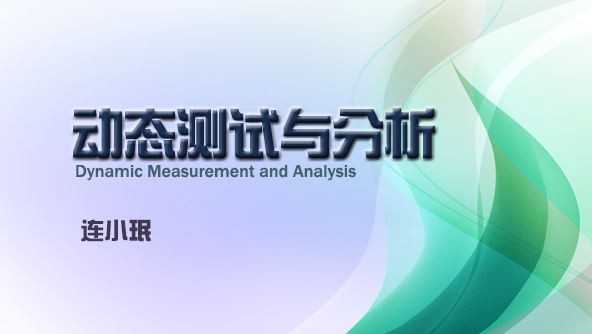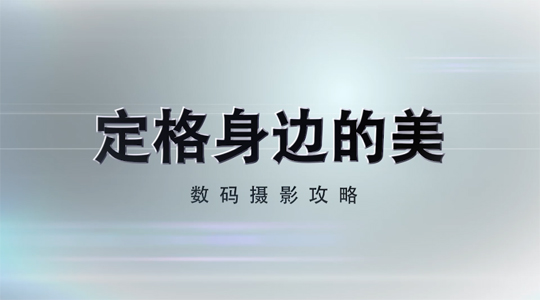
当前课程知识点:Introduction of New Structural Regional Economics > 1.An Overview of China's Economic Development: The Origin of NSRE > 1.2.2 Coastal special economic zones in China > 1.2.2 Coastal special economic zones in China
返回《Introduction of New Structural Regional Economics》慕课在线视频课程列表
返回《Introduction of New Structural Regional Economics》慕课在线视频列表
大家好
欢迎大家继续学习
新结构区域经济学导论
本节课我们继续学习第1章第2节的内容
中国沿海经济特区
我们将逐步分析
中国在不同阶段采取的重点发展策略
首先是经济特区
这是在1978年改革开放之后
实施的探索式发展战略
在中国领导人邓小平的带领下
中国开始从计划经济转向市场经济
这一时期
中国东部沿海地区
从这些改革中获益匪浅,
经济发展迅速
总结一下
中国的经济改革特点是渐进主义和实验主义
就像邓小平所说
摸着石头过河
他主张有条件的地区和有条件的人先富起
促进和帮助落后的地区和人民
最终实现共同富裕
经济特区实际上
就是在这种渐进主义和实验主义的情况下产生的
当然,在这个过程当中
政府起到了一个非常重要的改革先锋的作用
实际上经济特区源于经济开发区
全世界特别是当今发达的经济体
普遍设立了经济开发区
根据世界银行的调查报告,到2008年,
全球共有119个发展中国家和转型国家
设立了超过2300个各种类型的开发区
在中国改革开放之后
开始设立开发区
称为经济特区
中国的经济特区首先是在1980年开始
中国政府设立了4个经济特区
在深圳、珠海、汕头和厦门
1984年中国政府又开放了沿海城市
主要是一些港口城市
包括大连 秦皇岛 天津 烟台 青岛等等
进一步 1984年到1986年
中国又先后设立了14个国家级经济开发区
推广经济特区成功经验
在沿海城市设立经济开发区
是经济特区试验成功后
对外开放战略的重要组成部分
这幅图绿色的点
代表的就是国家经济开发区
和沿海开放城市是基本上相吻合的
此后 1985年到1988年
中国政府又先后确立了经济三角洲区域
全部成为现在中国经济发展重点区域
1991年中国又开放了几个口岸城市
主要集中在东北地区
主要是考虑与东北亚地区的合作
同时
中国政府还成立了保税港区
在天津 上海外高桥和海口
此外
中国还在2000年开始陆续设立了出口加工区
出口加工区政策的实施
进一步促进了中国的开放
由沿海向内陆的延伸
此外,中国还逐步设立了
大量的经济开发区
已经由东部地区扩张到中西部地区
并且由大城市扩展到中小城市
各等级开发区在中国层出不穷
呈现出遍地开花的发展态势
从经济特区到经济开发区
为中国区域发展
奠定了非常好的基础
并且
在当前经济转型背景下
中国经济开发区也正在及时转变发展方式
这幅图梳理了中国从非均衡
到协调发展的这样一个渐进式的区域开发战略
我们可以清晰的看到
从1978年到2016年
最开始的重点发展区域都集中在东部沿海地区
1990年开始向中西部内陆地区扩展。
到2016年 中国东部沿海
及中西部内陆地区的国家级开发区
自贸区以及城市群地区等等
呈现出全面发展格局
而新时期 也就是2015年以后
中国的经济开发区的转型升级
进一步推进了中国的高质量发展
2017年1月 中国颁布了
关于促进开发区改革
和创新发展的若干建议
和创新发展的若干建议
该文件强调
该文件强调
开发区建设是中国改革开放的成功实践
对促进体制改革 改善投资环境
引导产业集聚 发展开放型经济
发挥了不可替代的作用
开发区已经成为推动中国工业化
城镇化快速发展
和对外开放的重要平台。
当前全球经济和产业格局
正在发生深刻变化
中国的经济发展进入了新常态
面对新形势
中国必须进一步
发挥开发区作为改革开放排头兵的作用,
形成新的集聚效应和增长动力
引领经济结构优化调整
引领经济结构优化调整
和发展方式的转变
进一步 2019年5月中国又颁布了
关于推进国家级经济技术开发区创新提升
关于推进国家级经济技术开发区创新提升
打造改革开放新高地意见
打造改革开放新高地意见
主要目的是
通过构建国家级经济技术开发区
开放发展新体制
发展更高层次的开放型经济
加快形成国际竞争新的优势
充分发挥产业优势和制度优势
带动地区经济发展
这一过程强调
要充分发挥国家级经济技术开发区
对外开放的平台作用
集聚生产要素,促进产业升级
拓展发展的新空间
拓展发展的新空间
并且要进一步坚持市场主导
政府引导的原则
也就是新结构区域经济学强调的
有为政府和有效市场的原则
充分发挥市场在资源配置中的
决定性作用 更好发挥政府作用
激发市场活力和创造力
培育经济发展的新动能
总体来看
正是通过从沿海到内陆
经济特区到经济开发区的渐进式转型发展
促进了中国改革开放
40年来的经济平稳增长
好 以上就是本节课的主要内容
谢谢大家
-1.1.1 China's Physical Geography
--1.1.1 China's Physical Geography
--1.1.1 Test
-1.1.2 Hu Line
--1.1.2 Test
-1.1.3 Economic catch-up of the central and western China
--1.1.3 Economic catch-up of the central and western China
--1.1.3 Test
-1.2.1 Overview of China’s economy
--1.2.1 Overview of China’s economy
--1.2.1 Test
-1.2.2 Coastal special economic zones in China
--1.2.2 Coastal special economic zones in China
--1.2.2 Test
-1.2.3 Western Development strategy in China
--1.2.3 Western Development strategy in China
--1.2.3 Test
-1.2.4 Northeast China Revitalization Plan
--1.2.4 Northeast China Revitalization Plan
--1.2.4 Test
-1.2.5 Rise of Central China Plan
--1.2.5 Rise of Central China Plan
--1.2.5 Test
-1.3.1 Coordinated regional development and main functional area
--1.3.1 Coordinated regional development and main functional area
--1.3.1 Test
-1.3.2 China’s urban agglomeration pattern and the economic effect
--1.3.2 China’s urban agglomeration pattern and the economic effect
--1.3.2 Test
-2.1 Agricultural location theory
--2.1 Agricultural location theory
--2.1 Test
-2.2 Growth Pole Theory
--2.2 Test
-2.3 The Stages of Economic Growth
--2.3 The Stages of Economic Growth
--2.3 Test
-2.4 Pole & Axis System Theory
--2.4 Pole & Axis System Theory
--2.4 Test
-2.5 Center-periphery theory
--2.5 Test
-3.1 Why New Structural Economics
--3.1 Why New Structural Economics
--3.1 Test
-3.2 The Theoretical Foundation of New Structural Economics
--3.2 The Theoretical Foundation of New Structural Economics
--3.2 Test
-3.3 Does New Structural Economics Offer Explanations?
--3.3 Does New Structural Economics Offer Explanations?
--3.3 Test
-3.4 Application for Industrial Policy
--3.4 Application for Industrial Policy
--3.4 Test
-3.5 Does the idea of New Structural Economics work?
--3.5 Does the idea of New Structural Economics work?
-4.1 Regional Externality
--4.1 Test
-4.2 Endowment Structure Transformation
--4.2 Endowment Structure Transformation
--4.2 Test
-4.3 Role Boundary of Facilitating Government
--4.3 Role Boundary of Facilitating Government
--4.3 Test
-4.4 Spatial Optimal Equilibrium
--4.4 Spatial Optimal Equilibrium
--4.4 Test
-4.5 Evolution of Dynamic Spiral
--4.5 Evolution of Dynamic Spiral
--4.5 Test
-5.1 China's Development Experience and OFDI
--5.1 China's Development Experience and OFDI
--5.1 Test
-5.2 Commonness and New Trends of Developing Countries
--5.2 Commonness and New Trends of Developing Countries
--5.2 Test
-5.3 Industrialization of Developing Countries with Special Economic Zones
--5.3 Industrialization of Developing Countries with Special Economic Zones
--5.3 Test
-5.4 Growth Identification and Facilitation Framework (GIFF)
--5.4 Growth Identification and Facilitation Framework (GIFF)
--5.4 Test
-5.5 GIFF in Practice and Case Studies (Nigeria, Benin and Uzbekistan)
--5.5 GIFF in Practice and Case Studies (Nigeria, Benin and Uzbekistan)
--5.5 Test
- 6.1.1 The global competitiveness model and its theoretical basis
-- 6.1.1 The global competitiveness model and its theoretical basis
--6.1.1 Test
- 6.1.2 The Brief introduction of the Theory of County Economic Competitiveness
-- 6.1.2 The Brief introduction of the Theory of County Economic Competitiveness
--6.1.2 Test
- 6.2.1 Situation of the Chinese Counties: Development Stage、Location Characteristics and Natural Res
-- 6.2.1 Situation of the Chinese Counties: Development Stage、Location Characteristics and Natural Res
--6.2.1 Test
- 6.2.2 The other Situation of the Chinese Counties and The Case of Qinyuan Pencil
-- 6.2.2 The other Situation of the Chinese Counties and The Case of Qinyuan Pencil
--6.2.2 Test
- 6.2.3 The County's Development Strategy (comparative advantage) Analysis
--6.2.3 The County's Development Strategy (comparative advantage) Analysis
--6.2.3 Test
-6.2.4 The Other County's Development Strategy (comparative advantage) Analysis and Conclusion
--6.2.4 The Other County's Development Strategy (comparative advantage) Analysis and Conclusion
--6.2.4 Test
-6.3.1 The Case of Jinjiang and Guanling
--6.3.1 The Case of Jinjiang and Guanling
--6.3.1 Test
- 6.3.2 The Case of Qianyang and Changzhi
-- 6.3.2 The Case of Qianyang and Changzhi
--6.3.2 Test
- 6.3.3 The Case of Hotan
-7.1.1 Targeted Poverty Alleviation Strategy
--7.1.1 Targeted Poverty Alleviation Strategy
--7.1.1 Test
-7.1.2 Cases of the Old Revolutionary Base Areas
--7.1.2 Cases of the Old Revolutionary Base Areas
--7.1.2 Test
-7.2 Growth Identification and Industrial Policy: Jilin Revitalization
--7.2 Growth Identification and Industrial Policy: Jilin Revitalization
--7.2 Test
- 7.3.1 The Carrying Capacity of Yangtze River Economic Belt
-- 7.3.1 The Carrying Capacity of Yangtze River Economic Belt
--7.3.1 Test
- 7.3.2 The Development of Yangtze River Economic Belt
--7.3.2 The Development of Yangtze River Economic Belt
--7.3.2 Test
-7.4 Growth Identification and Facilitation: Integration of Yangtze River Delta and High-quality Deve
--7.4 Growth Identification and Facilitation: Integration of Yangtze River Delta and High-quality Deve
--7.4 Test
-Final examination



